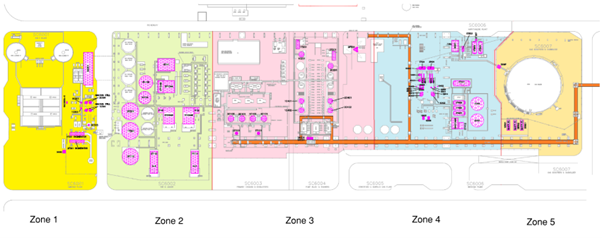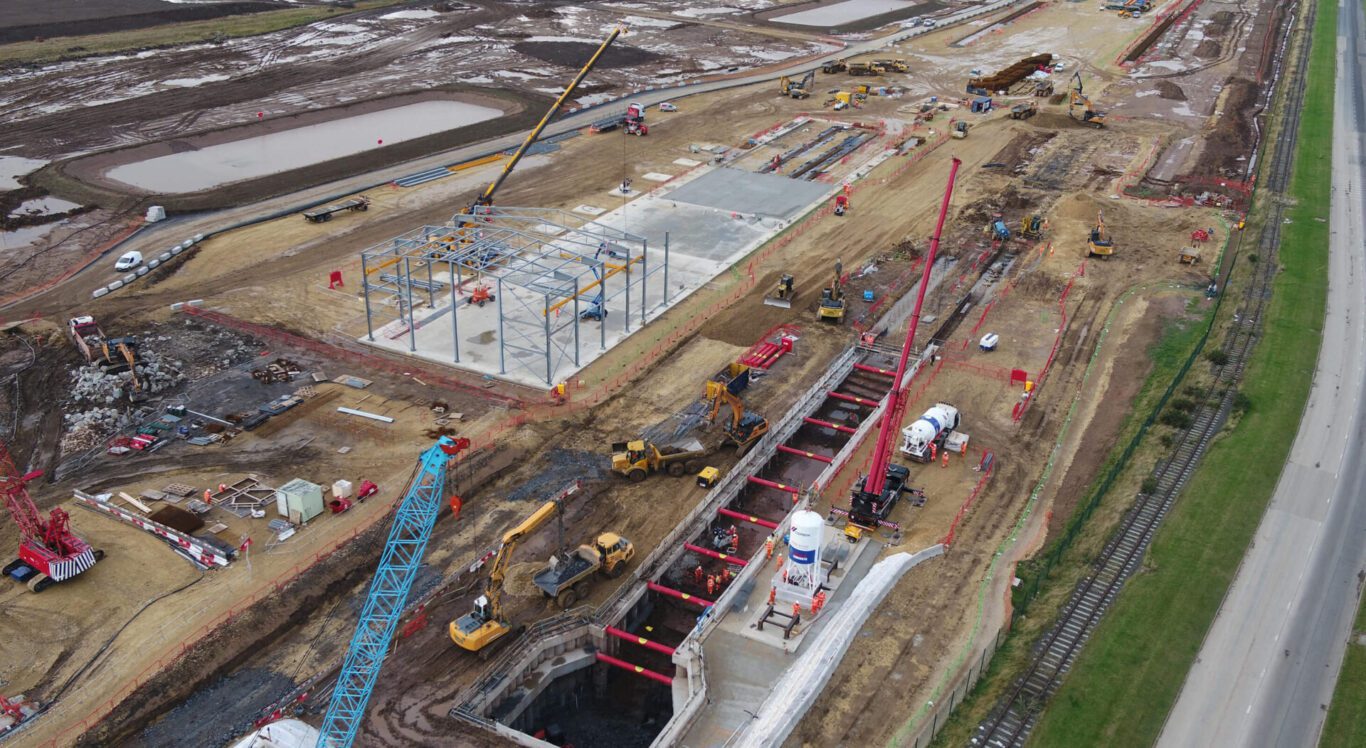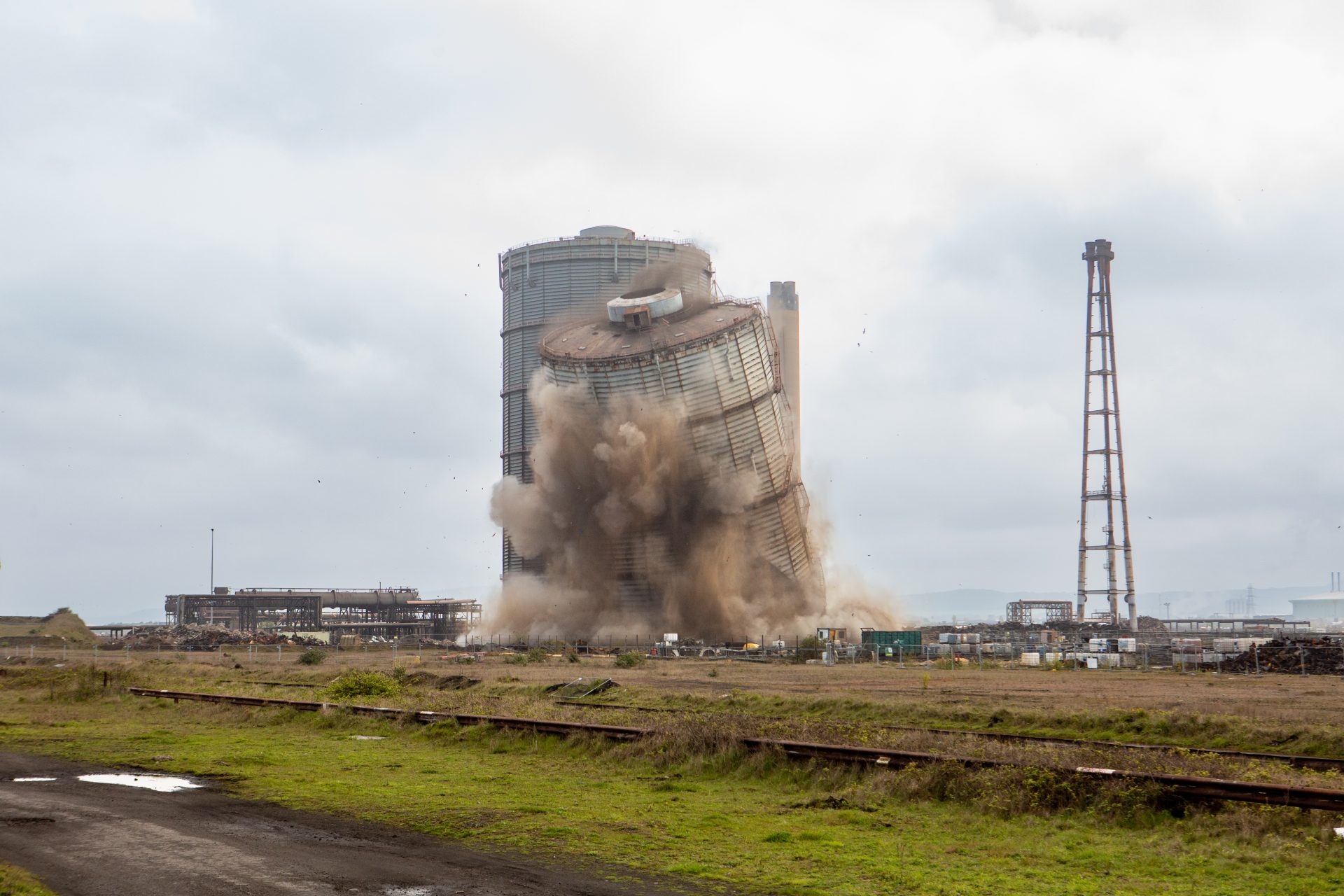Redcar Coke Ovens By Products (RCOBP)
MGL Demolition was appointed as Principal Contractor and Principal Designer for the works to decontaminate and demolish all above ground buildings, structures, and vessels of the Redcar Coke Ovens By Products (RCOBP). This area of the former Redcar Steelworks, an Upper Tier COMAH site, is being cleared for potential future development.
The RCOBP was built during the 1970’s and commissioned in 1978. It was mothballed in 1982 during a planned rebuilding of the Redcar Coke Ovens (RCO) Battery. Recommissioning followed in 1984. During that period the sites iron and steel making operations remained operational, using coke from the South Bank Coke Ovens and other coke making facilities within the wider British Steel at that time. The entire steelworks was initially mothballed in 2010 by Tata. A sale from Tata to SSI took place in 2011, with a restart of operations commencing in April 2012. During the two-year mothball period, Redcar Coke Ovens was operational throughout, producing coke for Tata. In October 2015, the SSI operations, including the coke ovens, were shut down completely and the site has laid dormant. This area is now part of the wider Teesworks site, covering 4,500 acres.
The function of the RCOBP plant was to process and clean untreated Coke Oven Gas (COG) from the RCO Battery, produced as part of the coke making process. The treated COG was returned to various parts of the plant for reuse around the Steelworks, reducing the need to buy in expensive fuels. Residual chemicals withdrawn from the COG as part of the treatment process were then either sold or recycled within the process.
The RCOBP site contained many tanks, vessels, buildings, washers, stills, stacks and sumps with above and below-ground interconnecting pipework and infrastructure. The tallest vessels are in excess of 30m, tallest screen house circa 40m, 38m diameter x 62m tall Gas Holder and 120m tall Ammonia Incinerator Stack, all of which are within scope.
Decontamination & Demolition
Preparatory work started on site in June 2022 with cleaning and demolition commencing in July 2022. The site is predominantly split up into five zones, derived from the distinct areas of the plant which were in existence during its operation.
- Zone 1 Ammonia Plant
- Zone 2 Tar & Liquor Plant
- Zone 3 COG Cooling & Washing
- Zone 4 Benzole Plant
- Zone 5 Gas Boosters & Gasholder


MGL Demolition treated and decontaminated specific areas of the plant, depending on the type and nature of the chemicals and material contained within them. Extensive scaffolding has been utilised throughout to provide access to the structures being cleaned.
Waste produced as part of the cleaning and decontamination processes is collected into containers then transported and stored within one of three designated waste compounds prior to final disposal.
Following the successful completion of the decontamination of the tanks and vessels, we deployed a specialist in-house team to design a series of demolition methodologies and risk assessments for each tank and vessel, using various demolition techniques.
Heavy plant was utilised to complete the works including an array of tracked demolition specification excavators up to 100 tonnes, along with the use of a 50m high-reach specialist excavator to demolish the high structures.
The main Screen House, Gas Holder and Ammonia Incinerator Stack were felled using explosive techniques as part the biggest and most complex demolition programme in the UK.
Although demolition work has been completed, the MGL Demolition team is continuing to work on site, opening it up for future investment.



